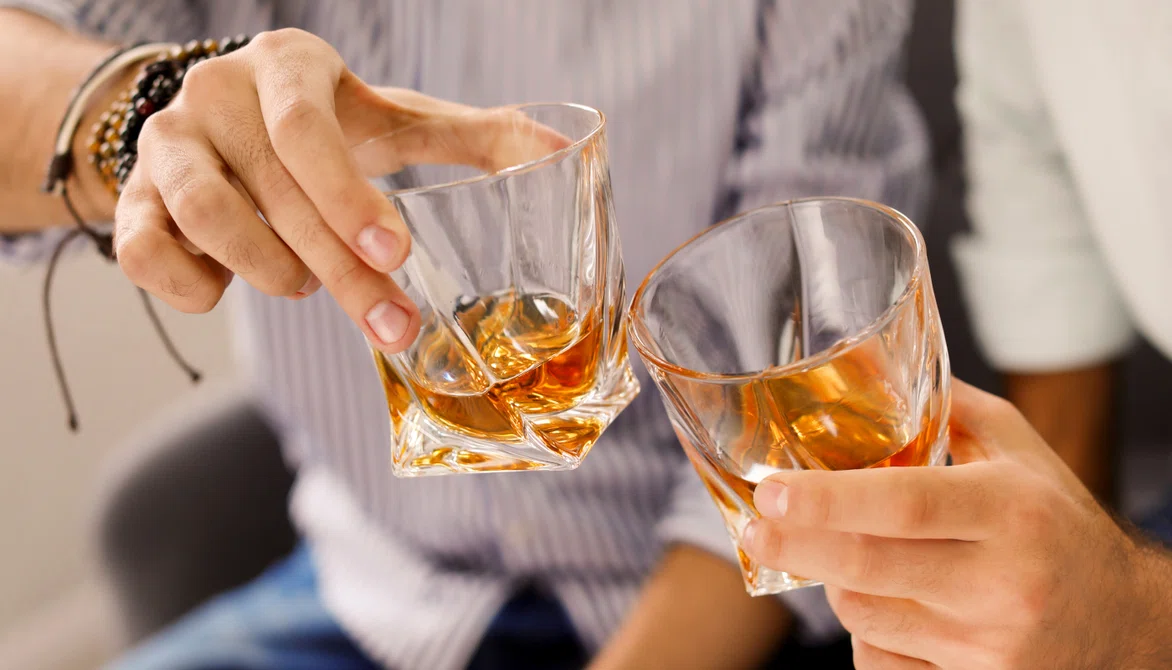How to Taste Whisky?

If you’re a whisky drinker through and through, you may be interested in the art of whisky tasting. Whisky is rich and complex enough to be studied and savored, just as much as a fine wine is.
Spirit tasting can be a valuable experience for anyone who wants to learn more about a certain alcohol, and who wants to improve their palate. The color, smell, alcohol level, finish, and even the time you drink it can affect the taste of just a single sip of whisky. When tasting whisky -- which is different from simply drinking whisky -- every note present in the drink can be carefully examined.
The best environment to taste whisky in is a group. That way, you can talk off of each other and compare the differences and similarities you gather from the drinks.
Step-by-Step Whisky Tasting
Step-by-Step Whisky Tasting
Now, let’s get into the steps that you can take to get the best out of your whisky tasting experience. Whisky tasting is not an exact science, though it may seem to be at times. Everyone may decide to examine their whisky in a slightly different way.
Observe the appearance
Before you actually taste the whisky, take a close look at it. The color can range from as pale as straw to a deep amber-brown, all thanks to the wood it was left to mature in. The color can help you predict how concentrated the flavor will be.
Test the viscosity
The viscosity of whisky refers to how ‘thick’ it is. For example, honey is viscous while water is not viscous. Similarly, a viscous whisky will feel more full-figured in your mouth. To test the viscosity, gently swirl the whisky and observe the way it slides down the side of the glass.
The streaks the whisky makes on the glass are called ‘legs.’ Thicker, slower legs mean that the whisky will be more viscous.
Check the ABV
One nifty way to check the ABV of a drink without having to look at the back of the bottle is to test the time it takes for bubbles to appear after shaking the whisky. Put one hand over the top of your glass, and shake. The longer it takes for bubbles to appear, the higher the ABV.
Now that one of your hands is wet with whisky, don’t wipe it off just yet! Rub your hands together and observe the smell. You should be able to pick up on the barley that was used for that whisky batch.
Time for a sniff!
Whisky’s ABV levels are often quite high, so taking too many very deep sniffs can easily numb your smelling glands. Because of this, it’s better to take quick sniffs.
There are a few ways that you can do this. Bring your nose right above the glass and sniff with your mouth slightly open. Or, you can put the tip of your nose inside the glass for a few seconds.
Short, quick sniffs are recommended. After each sniff, move away from the glass and savor the scents. Do your best to analyze them, then compare your thoughts with any other whisky tasters, if you’re tasting in a group, to get a deeper understanding of all the notes the whisky carries in it.
Take a sip -- finally!
When tasting whisky, keep your sips small or even tiny. Just a small amount of whisky is enough to tell you everything you need to know about it. In fact, a large sip of whisky will be so full of alcohol, that you’ll have a harder time trying to savor the actual flavors of it.
While you take little sips, make sure you breathe deeply. Flavors become stronger when you use your nose. Take a sip, take a deep breath, swish the whisky around so it gets into every crook and cranny of your mouth, and savor it before swallowing.
Some people prefer spitting over swallowing, but both are acceptable.
Once the whisky is out of your mouth, you are left with the ‘finish’ of the whisky. This is the leftover flavor that lingers in your mouth. Think about what flavors come out and which don’t.
Taking the Next Step
Now that you know how to taste a glass of whisky, you may be wondering how you can take whisky tasting to the next level.
Well, once you’ve tasted one type of whisky, try tasting another type. Why not start with Irish whisky and compare it to Scotch whisky? or compare barley and rye whisky? Another option is to try a ‘flight’ of whisky. This is where you try multiple versions of the same type and compare them. This makes for many interesting discoveries.
Whether you decide to do tasting for a day, or to make it a lifelong hobby, these steps will hopefully pave the way for your passion and appreciation for whisky.
SEE ALL BLOG ARTICLES
FIND SELECT CLUB WHISKY NEAR YOU
FIND SELECT CLUB WHISKY NEAR YOU


